
Sicily, the Amalfi Coast and Rome
Mike and Judy Henderson
September 18 - 28, 2018
I'm going to leave the map on each web page so you can see where we are.

9/22/2018 (Saturday) We arrived at Lipari Island today. It's a small island, about 14.5 square miles, and is known for its capers. Its main industry is tourism, though, especially in the summer. Our tour took us by bus around the island, on the road indicated in red.
One interesting thing we learned about the island of Lipari is that it has no fresh water except captured rain water. They import fresh water by ship, so water is very expensive on the island.

The capital city is also called Lipari, and this is a view of the port area of the city of Lipari, as we arrived.
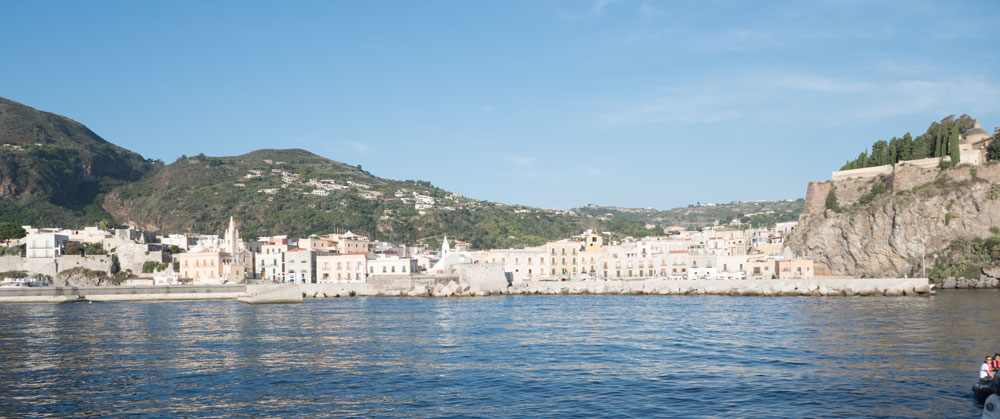
The chef had gone to the fish market early in the morning and came back with one large fish (a tuna) and a container of smaller fish - for dinner this evening.

We took a small bus and began our tour. Our first stop was at an overlook to see the neighboring island of Vulcano and its active volcano.

A closer view of the caldera of the volcano on Vulcano.
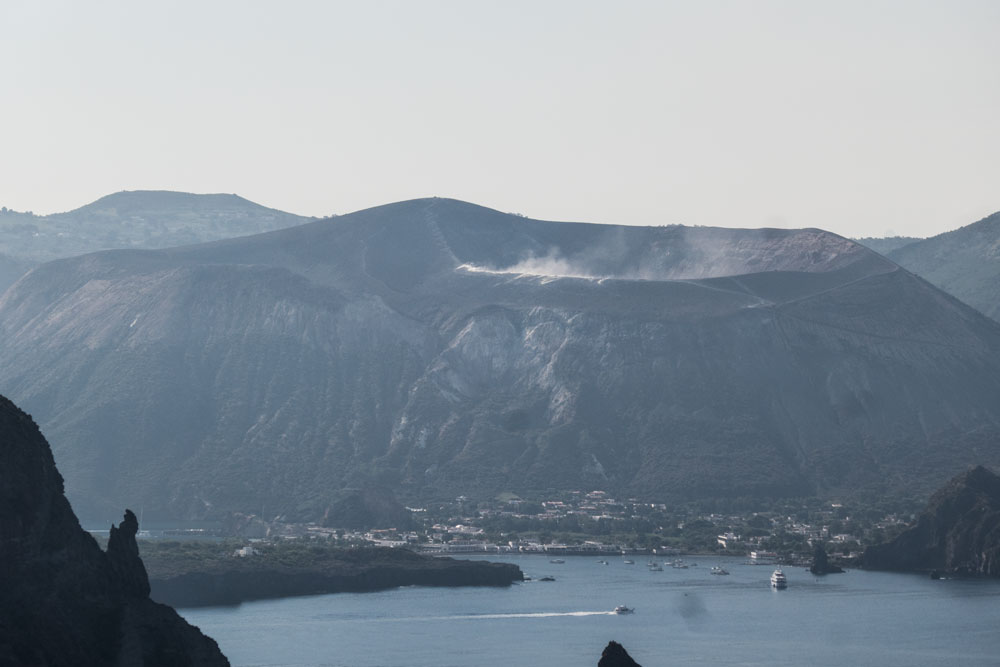
Our next stop was at a high point were there was a small retail stand selling local products. We bought some capers in salt.

As we drove around the island we came to the pumice open-pit mine. The mine is closed now, enabling the island to qualify as a UNESCO world heritage site. I couldn't get a good picture from the road because we were too close, so I took this picture as we were sailing away from the island.
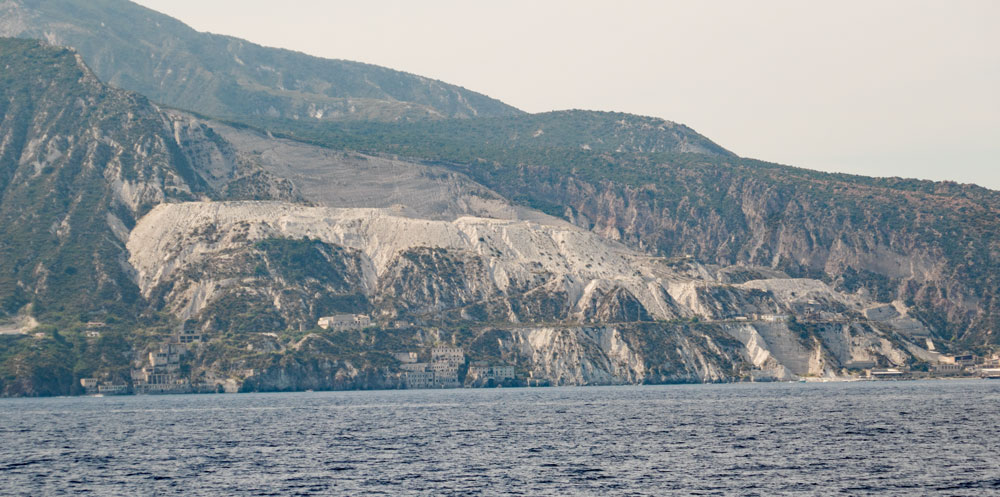
After returning to the city we went to visit the archeology museum located on the hill. It was originally built as a fortress.
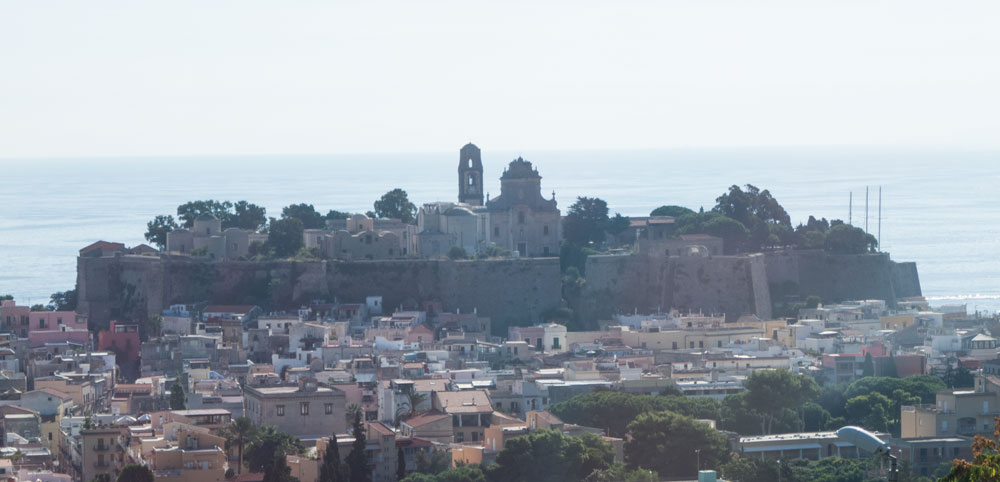
And a view from the water.
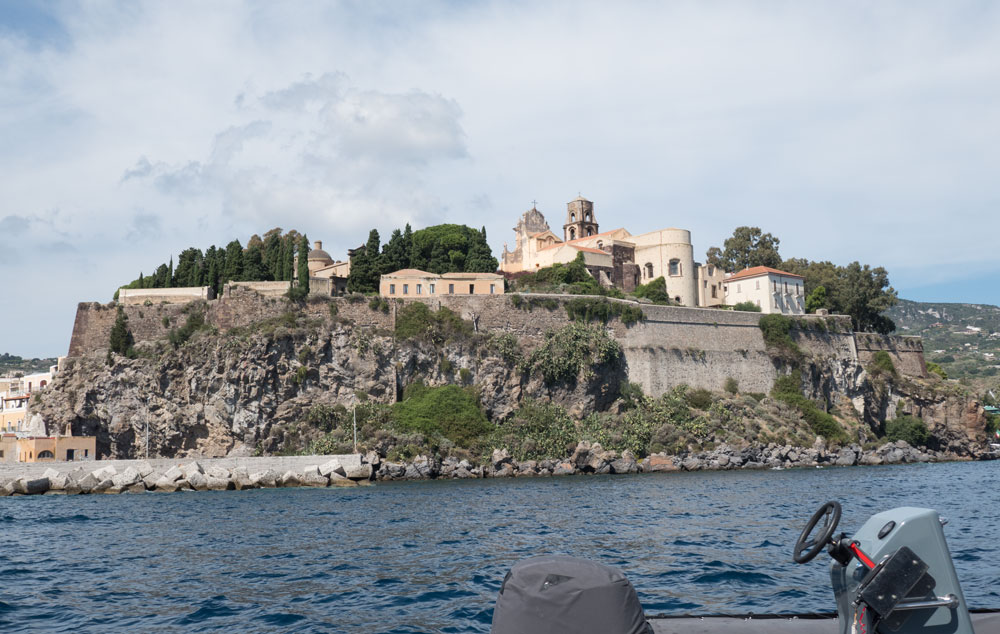
Some of the most ancient areas have been excavated.

One section of the museum displayed sarcophagi.
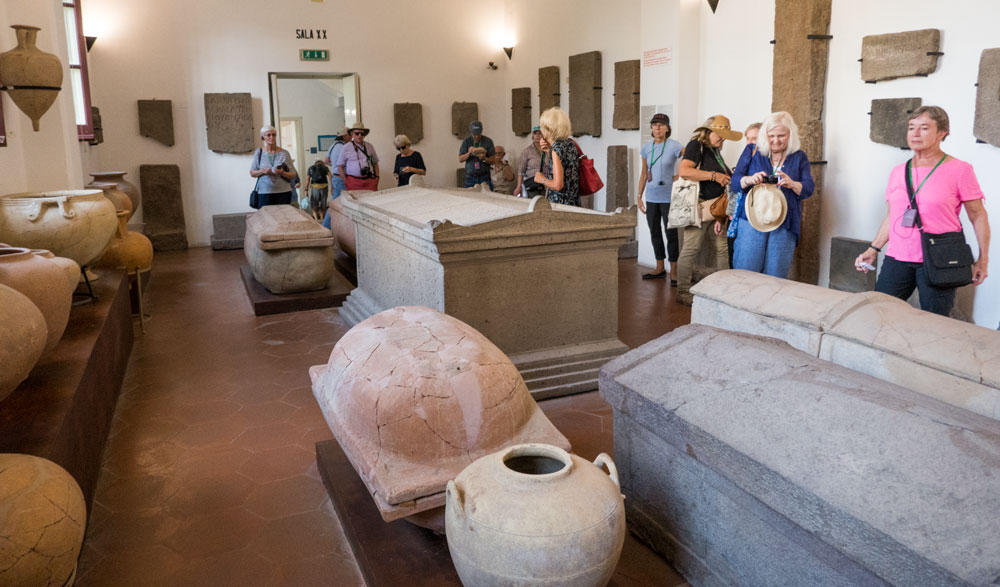
Another part had a display of amphorae. They have one of the largest collections of amphorae in the world, and the display in these pictures was just a very small part of the collection on display.

We were tired and returned to the ship a few minutes early. We headed back to the dock to board the zodiac.
As we sailed away from Lipari, we passed the Stromboli volcano during a minor eruption.
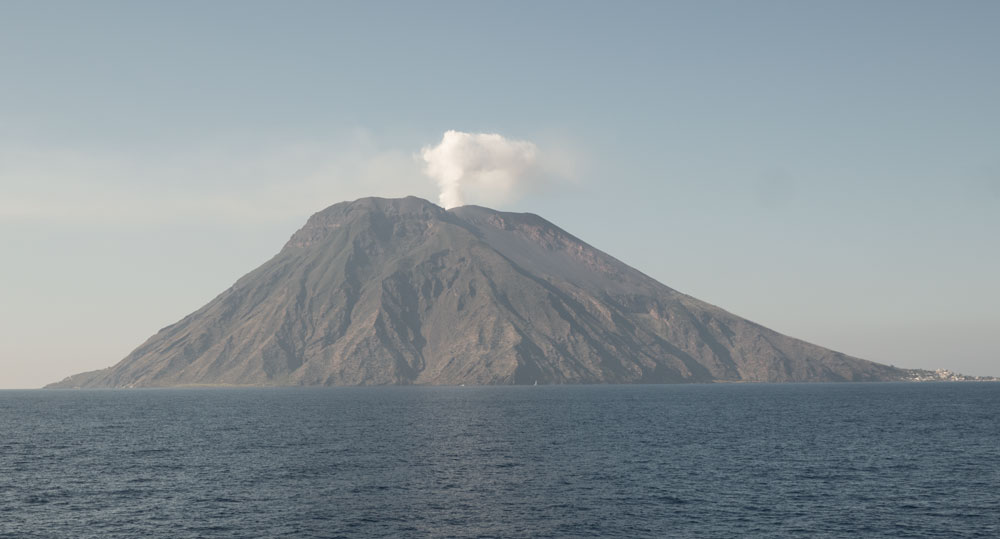
As we were passing Stromboli the crew raised the sails on the ship, including a spinnaker. Here are Judy and I on the ship with the spinnaker behind us.

The crew prepared the zodiacs so we could go out and take pictures of the ship under sail. We grabbed the opportunity. To get the zodiacs in the water, they had to take the spinnaker down.
Here's a shot of the ship against Stromboli.

Passengers in the other zodiac who were also taking pictures.

The crew raised the spinnaker again, but it shaded the ship and the picture is not as nice as the one without it.
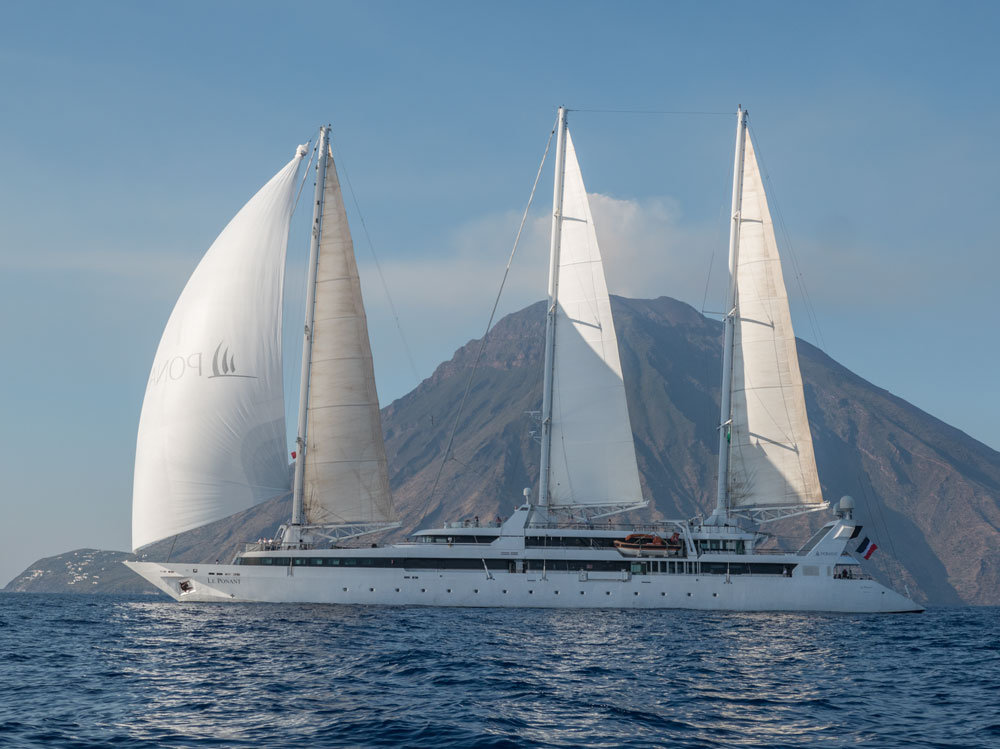
One last view of the ship.
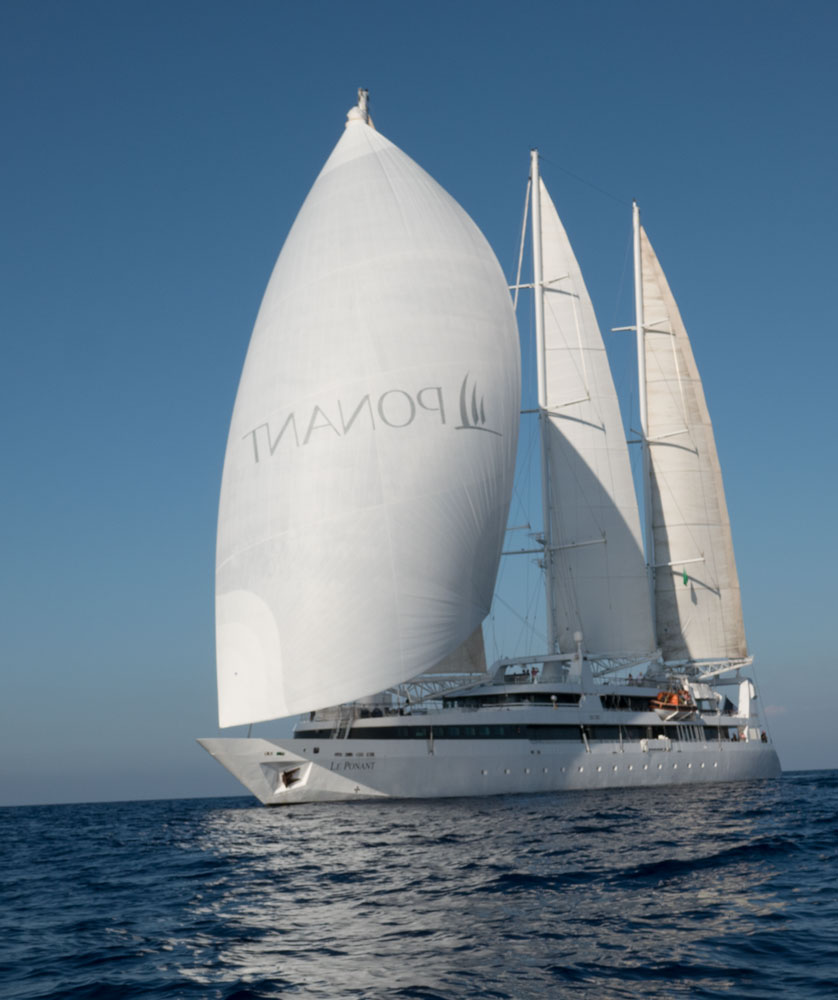
9/23/2018 (Sunday) We arrived in Trapani, on the western side of Sicily, this morning.
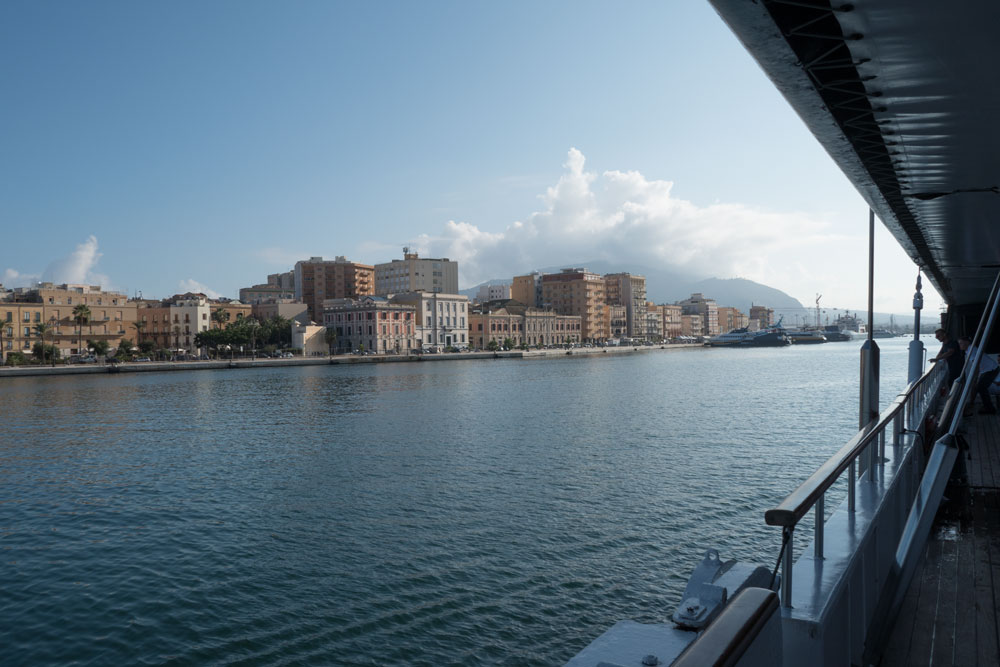
After breakfast, we debarked for our tour of a winery, the salt flats, and a visit to a private home.
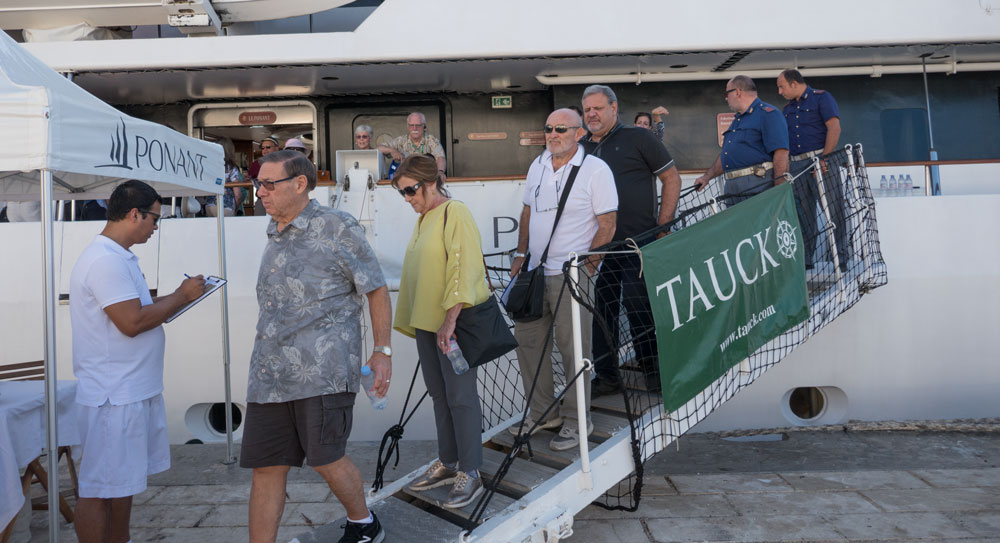
Here's a map of where we're going. We're docked in Trapani and are going below Marsala.

Our guide for today, and for tomorrow in Palermo, is Michelangelo

We began in the most western part of Sicily, Marsala. And then we continued a bit south to the Donna Fugata winery.

We were given a tour by a very nice employee of the winery.

A few pictures of tour people at the winery. Here are Ron and Nancy.
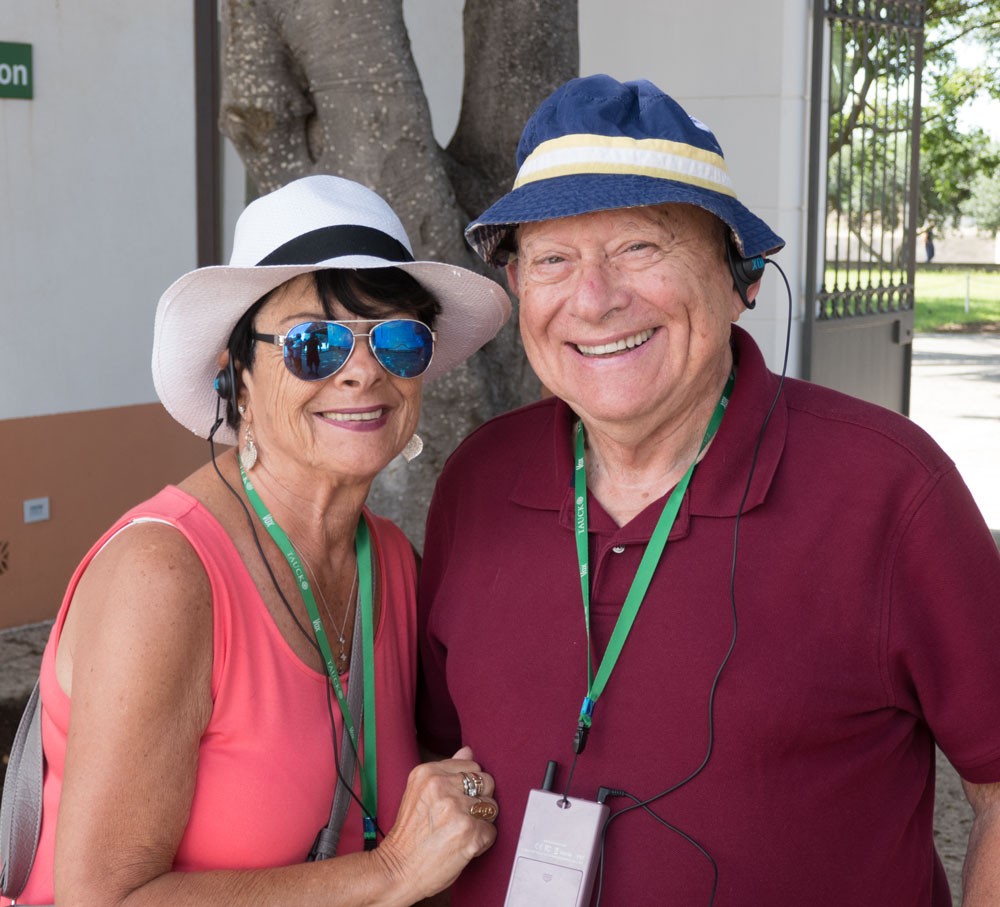
Fonza
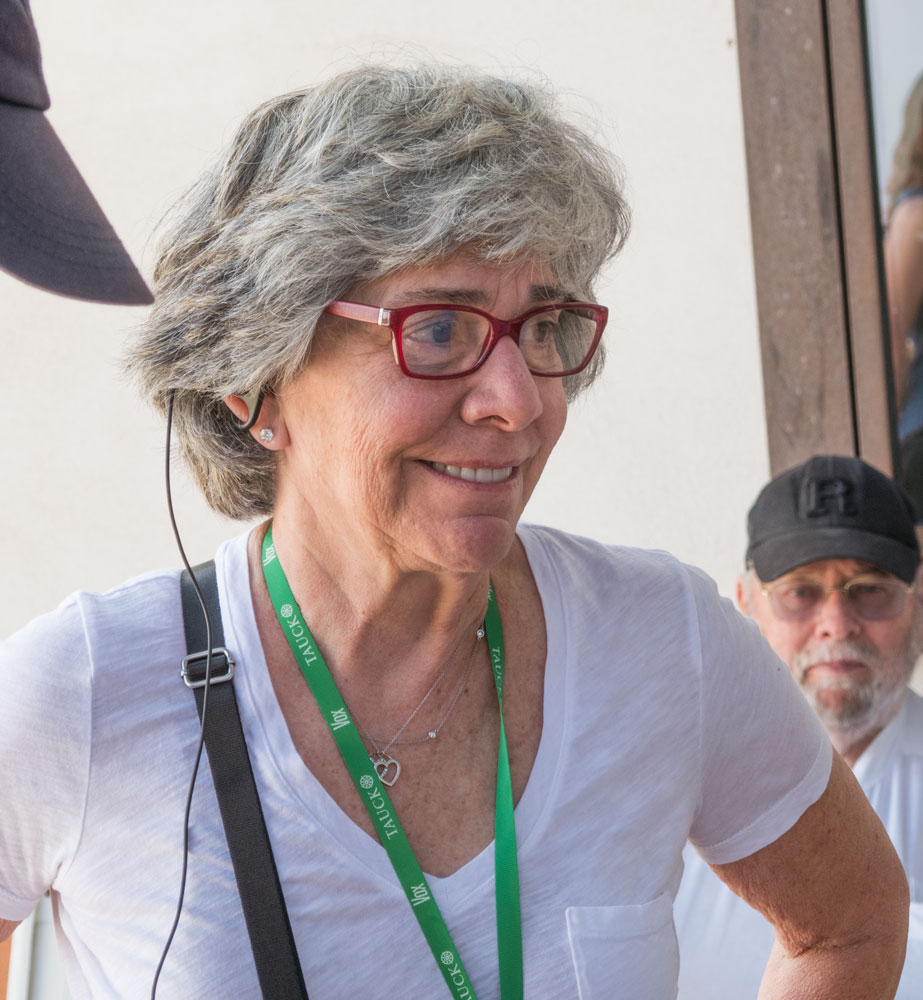
Wineries tend to be similar, so there won't be too many pictures. This one was quite new and had nice displays, though.
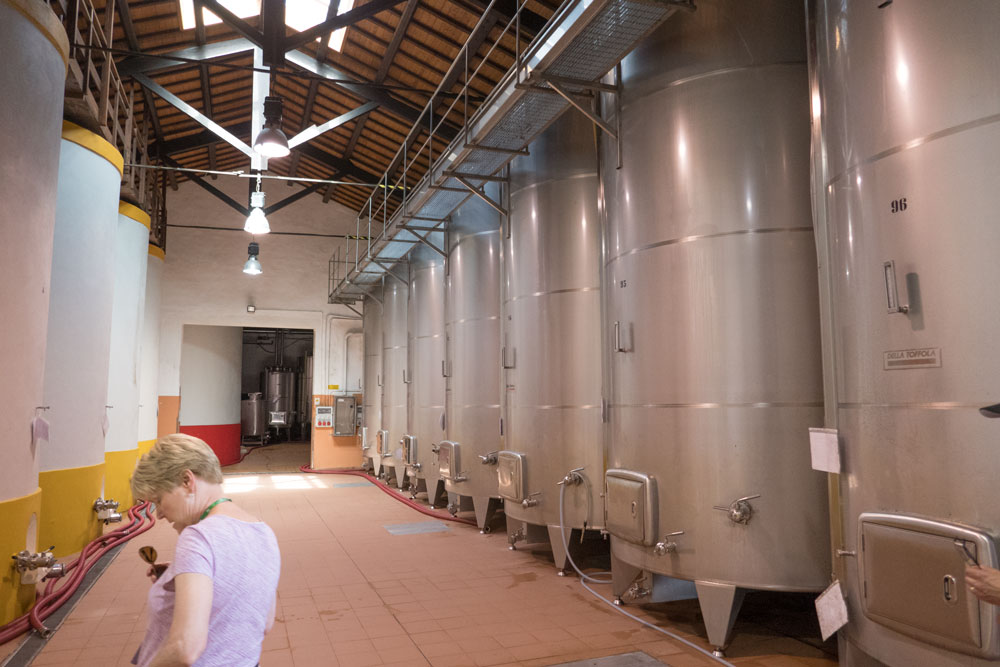
The barrel aging room.
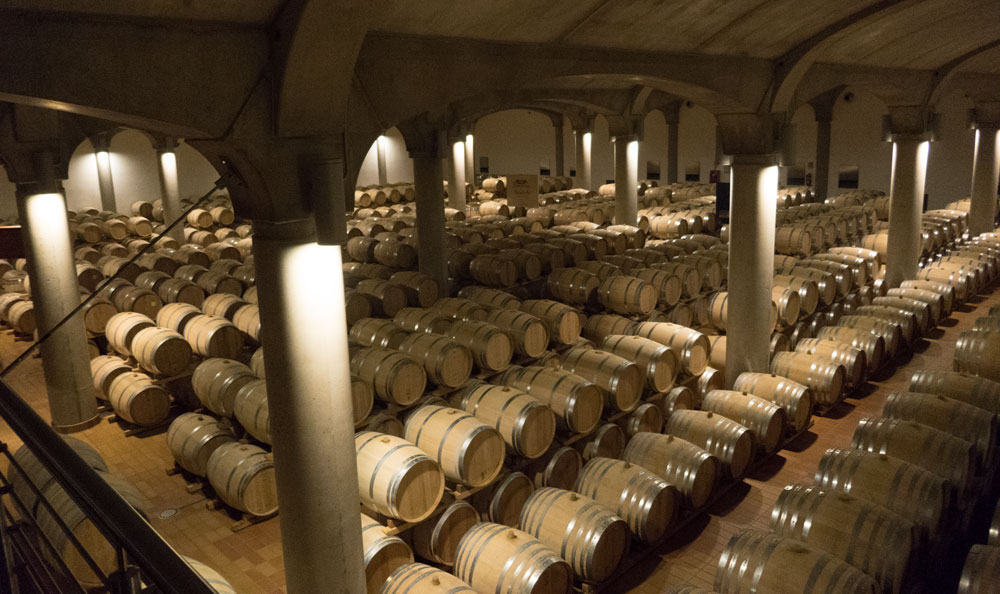
Then we went to the tasting room. They had a nice combination of snacks to pair with the wines.
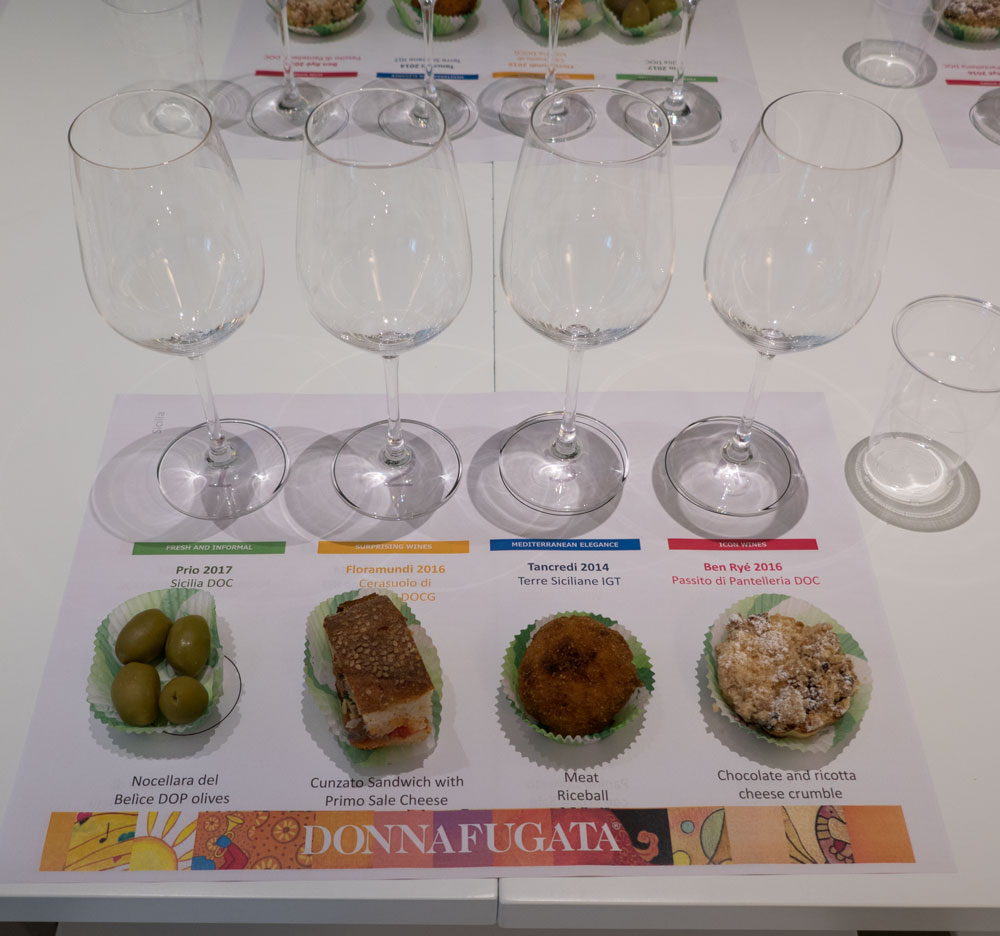
Here's the group at the tasting table.

After the winery visit, we went north toward Marsala, to the salt ponds.
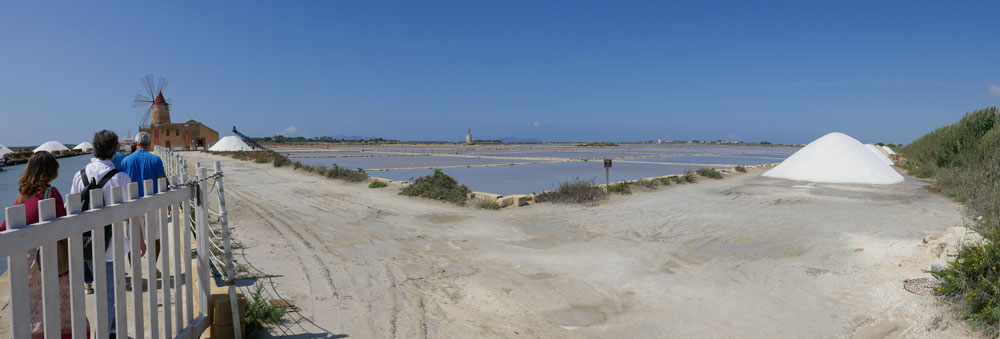
The tour begins in this building.
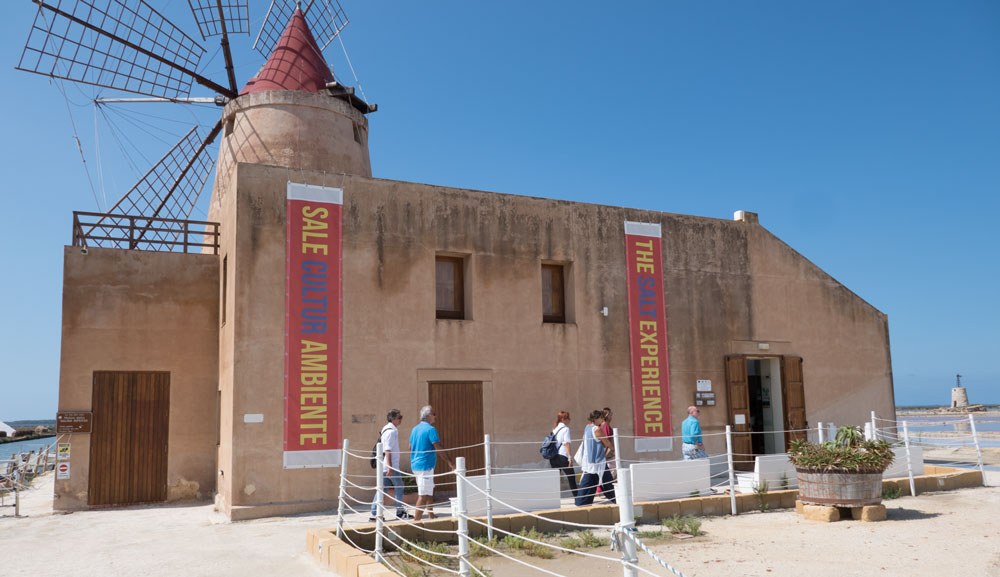
A bit of explanation is in order. Let's say that you take a container of pure water and begin adding salt to it. In the beginning, the salt will go into solution and the water will be clear. But eventually, the water will not dissolve any more salt and the salt you add just falls to the bottom of the container.
A salt pond is something like that, except they start with salty water (sea water) and evaporate the water. As they evaporate the water, the concentration of salt gets higher and higher until the salt begins to precipitate out of solution. Some of that salt floats on the top of the water and some falls to the bottom.
They scrape the floating salt off with a special tool, and that salt is known as "fleur de sel" (flower of salt), and is considered the best salt. The salt that falls to the bottom is scraped up with shovels and is known as "gray salt".
They may not evaporate the pond dry when removing the salt - the water cannot dissolve any more salt so they can scrape the bottom and stack the salt up on the berms around the ponds to allow the salt to dry. That salt dries hard and is broken up to handle. It is then put through a mill to break it up into a usable size.
Here's a pile of gray salt. Note the roofing tiles stacked at the bottom of the pile of salt. The enemy of the salt works is rain. Not only does it put fresh water into the evaporation ponds, but it can dissolve the piles of salt. So they basically make a "roof" with the roofing tiles to keep rain off the pile of salt.
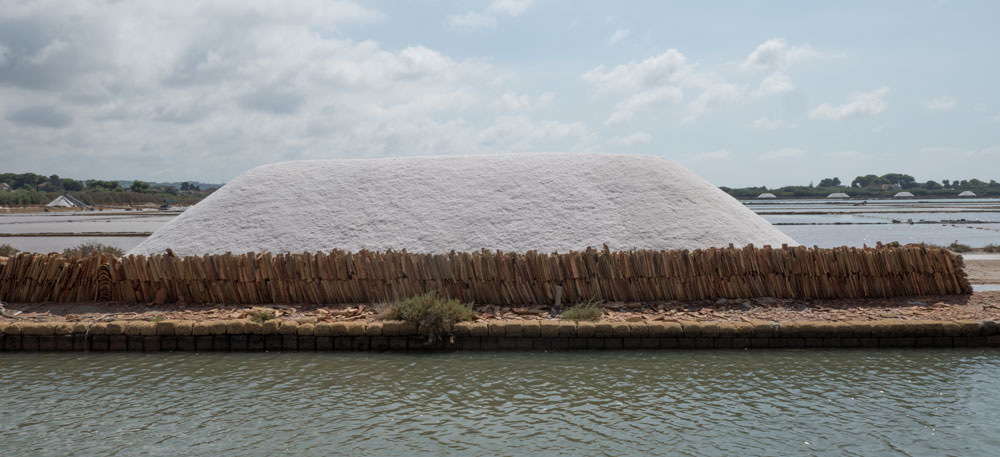
They had a "salt tasting" for us.
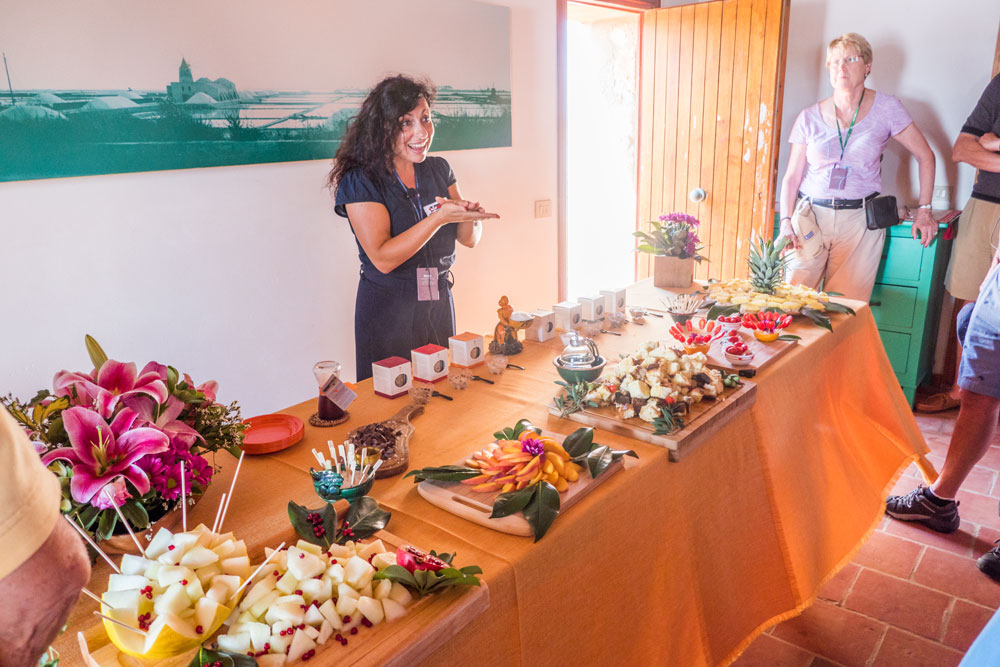
A view of the salt ponds from the second floor of the tour building. Most of the work is manual labor and is hard, hot, salty work, done in the heat of the summer. Not something I'd be attracted to:-)
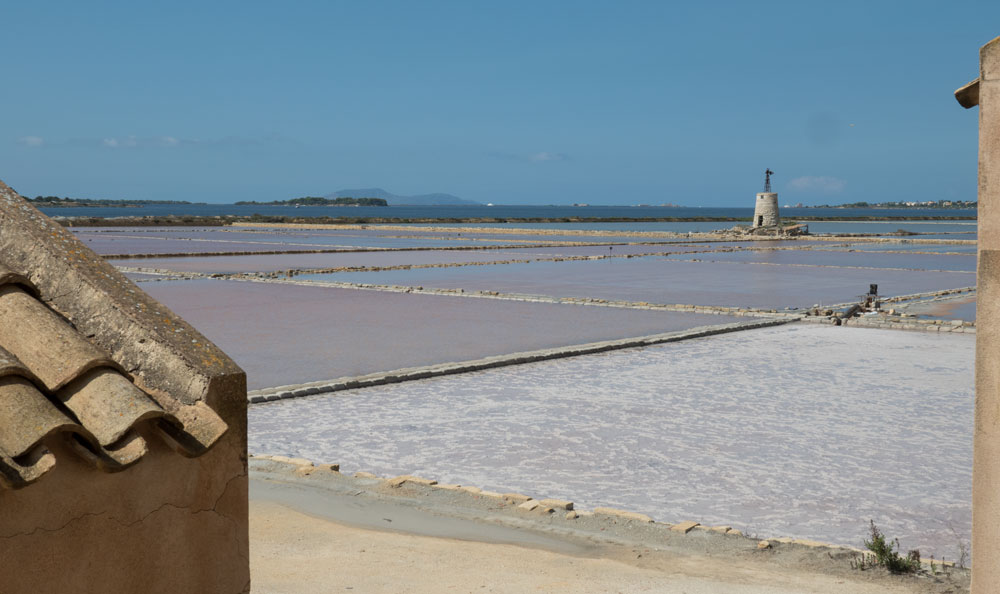
Then we went to the villa of the Baronessa Vivi and her husband Beppe. Their beautiful home was built in 1840 by "the grandfather of his grandfather". We were presented with coffee and desserts made especially for us, served in the lovely backyard garden, and they were charming hosts. We all appreciated being able to visit with them. Here's a side view of their villa.

Although this isn't the best picture, here are Baronessa Vivi and Beppe with their nieces, Gloria and Maria Vittoria.

We gathered in the back of the property, and this was the path that led there.
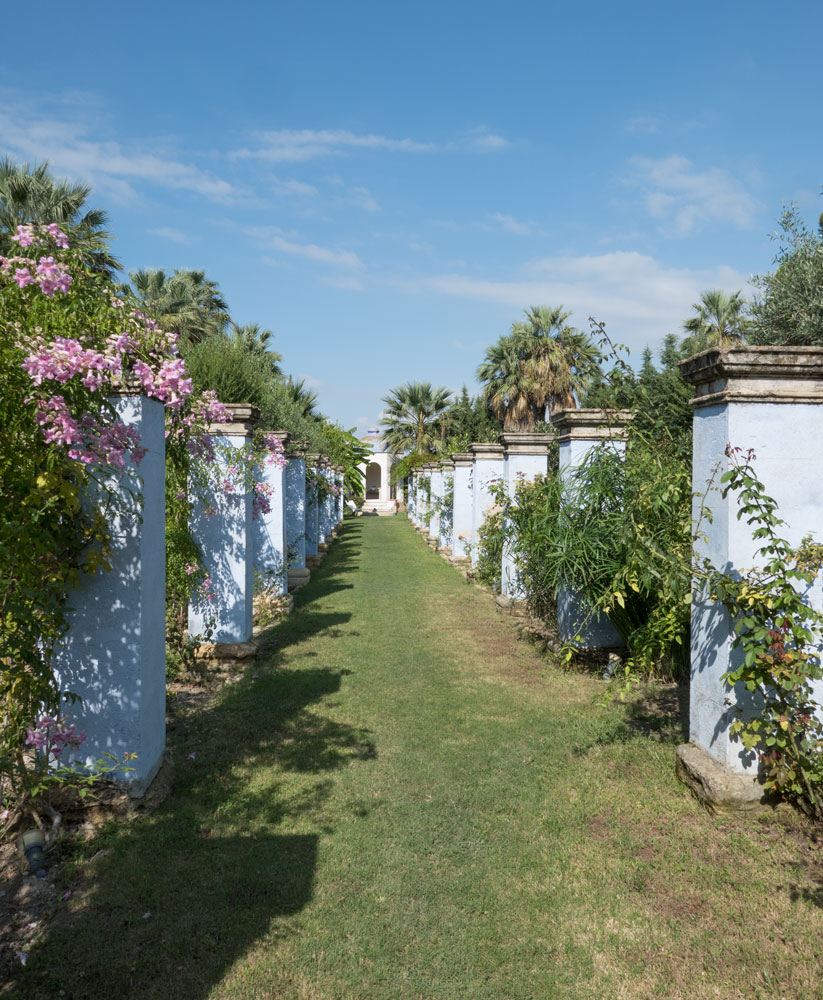
The gathering area was beautifully set. We had coffee, two ice cream cakes, almond cookies, and a ricotta pastry similar to cannoli that had the most delicate pastry crust we've ever tasted.
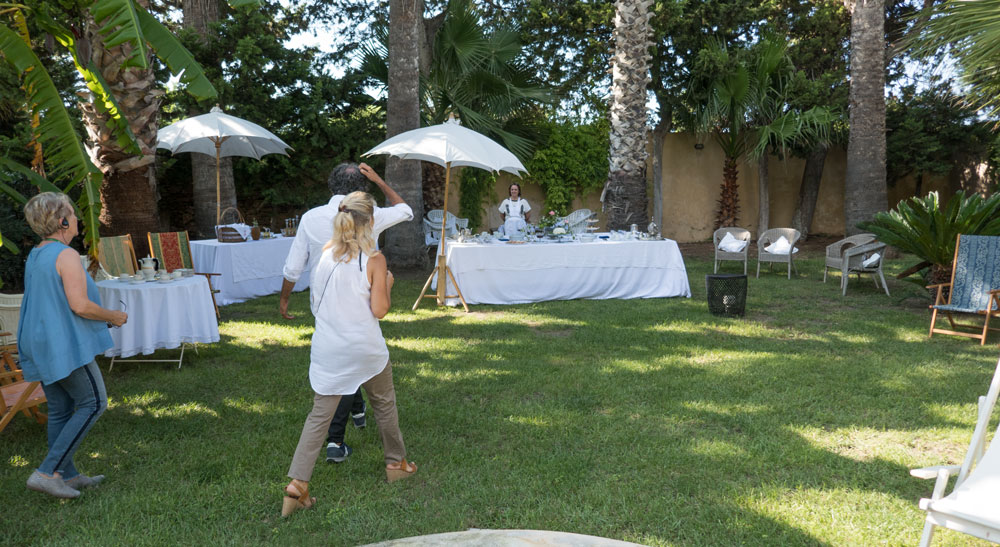
Here is the main table, with all the things they offered to us.
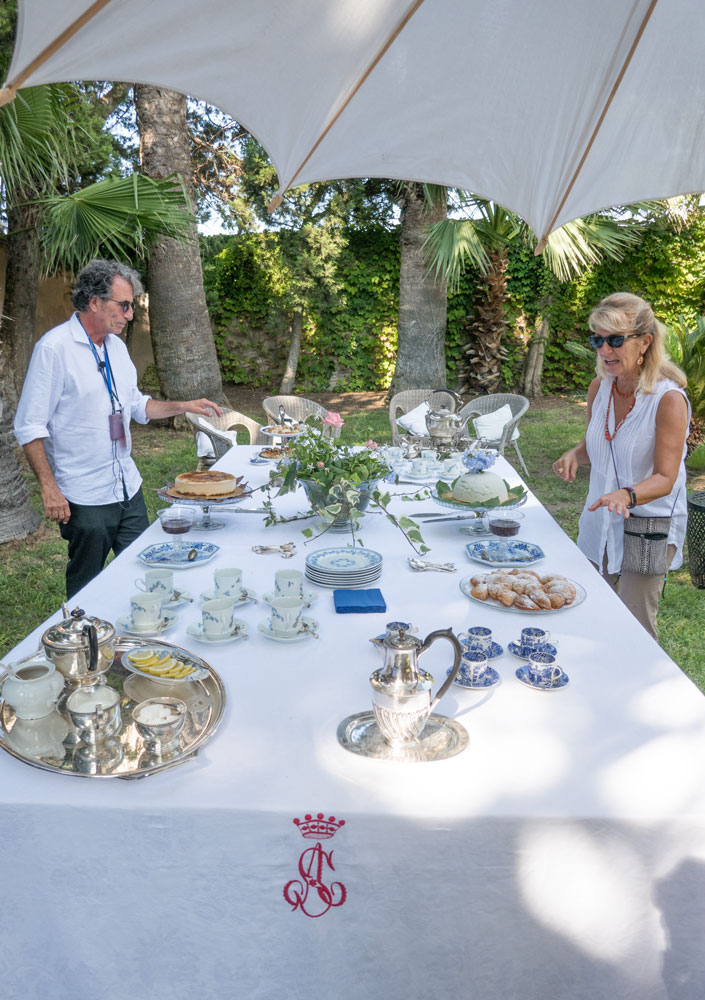
Here is Beppe in the garden.
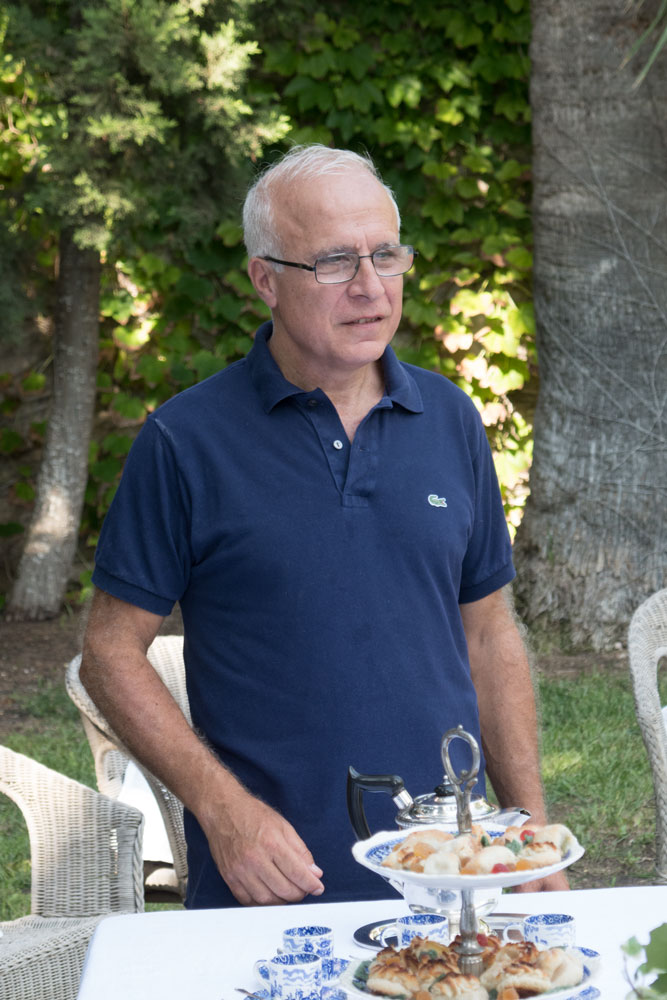
Judy and Baronessa Viva were enjoying a chat.
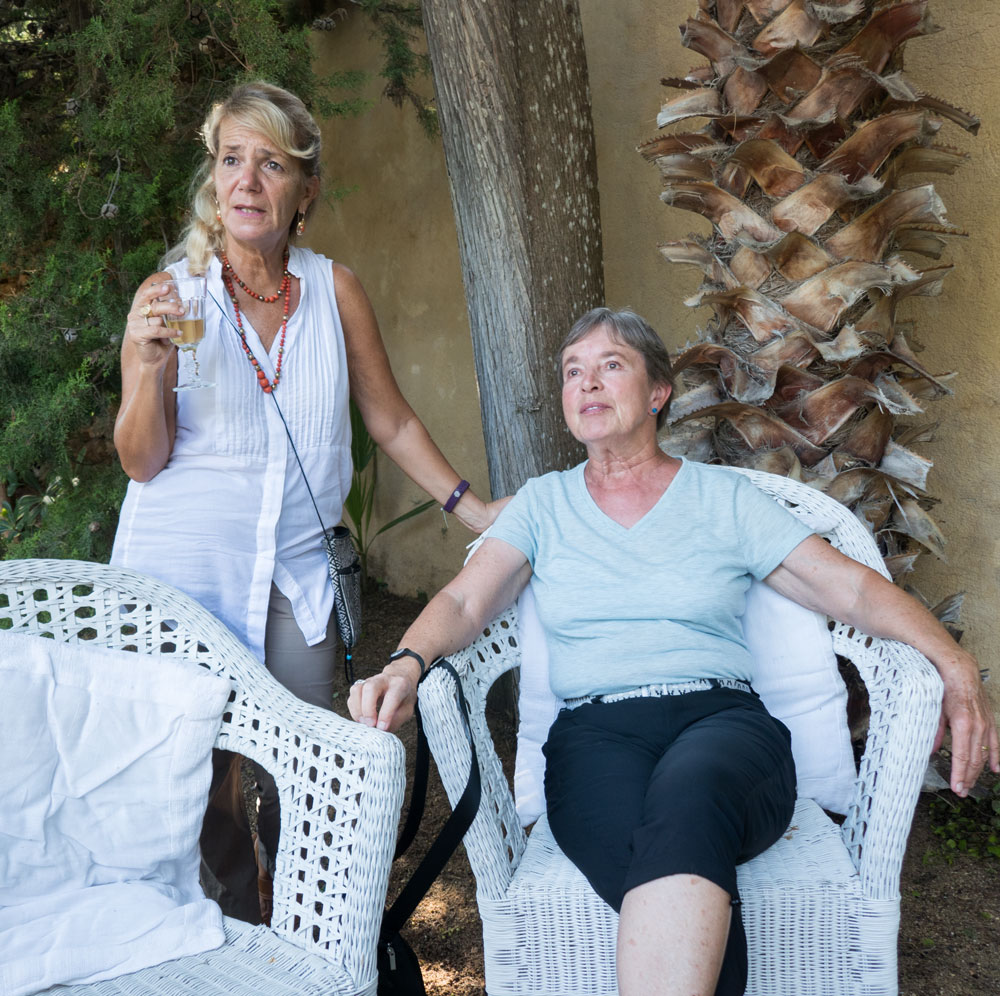
Rosa and Rosa (they referred to themselves as Rosa I and Rosa II) were helping to serve the food that they had prepared.

The Baronessa and Beppe both seemed to be enjoying the company.
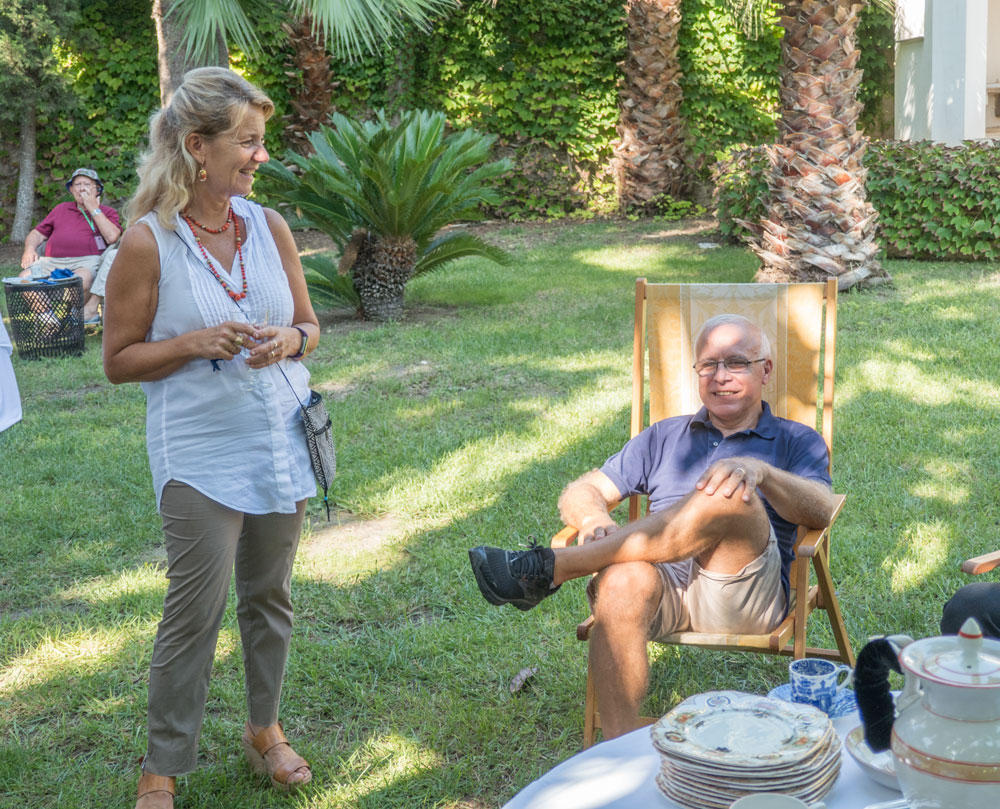
The Baronessa gave us a tour of the villa, but I did not take any pictures. It was really a very special and enjoyable visit.
But then it was back to the ship. We had cocktails on the top deck.
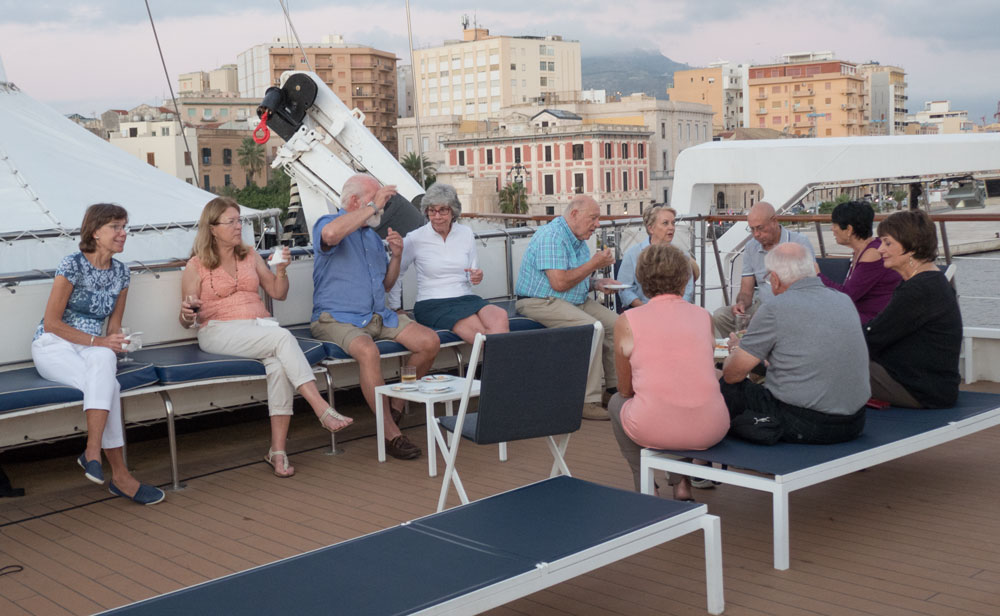
Judy took this picture of Roland and me.
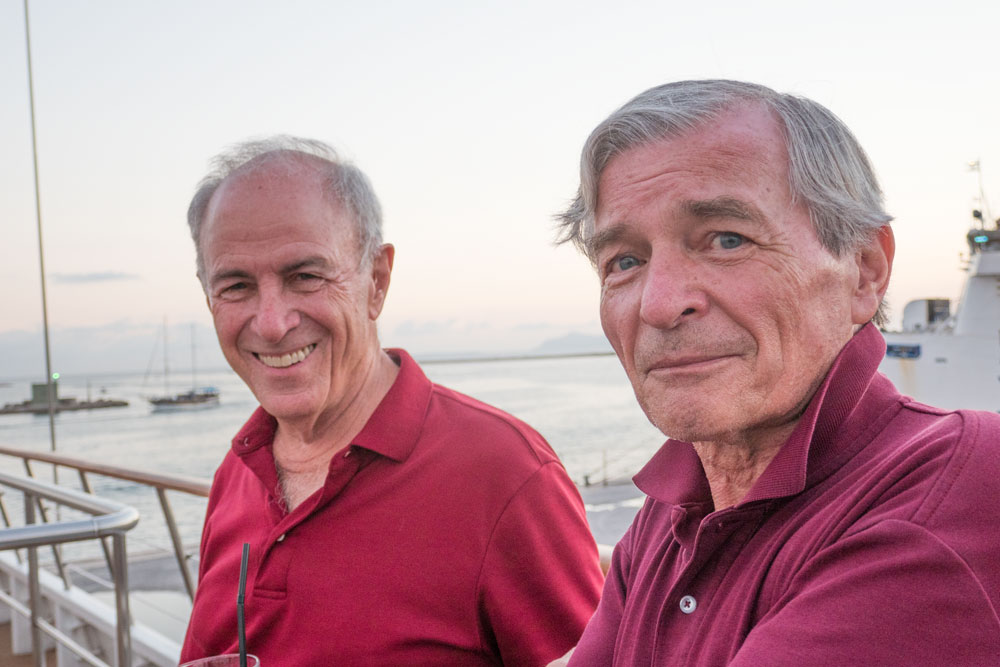
It was dark and a full moon by the time we went down to dinner.

That was the day. We sail to Palermo this evening.